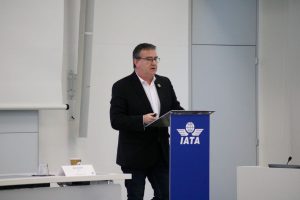IATA calls for transition to enhanced GSE
Transitioning to enhanced ground support equipment (GSE) could significantly improve safety and cut ground damage caused by GSE, according to the International Air Transport Association (IATA).
Calling for a transition to enhanced GSE, which uses anti-collision and inching technology to improve accuracy and safety, an IATA study says that the annual cost of ground damage caused by GSE will double to $10 billion by 2035.
IATA came to the figure by looking at the direct costs of material and labour, temporary leasing, logistical and administrative expenses, and indirect costs of lost revenue, crew and passenger repositioning and compensation for delayed services.
The study found that most damage occurs when the aircraft is stationery and GSE strikes the fuselage, and that the damage rate is 10 times higher for widebody aircraft but regional, turboprop and narrowbody aircraft are 30% more prone to severe ground damage.
According to the IATA ground damage incident data base, belt-loaders, cargo-loaders, passenger stairs and passenger boarding bridges cause 40% of the total incidents.
IATA estimates that transitioning 75% of the global fleet of belt-loaders, cargo-loaders, passenger stairs and passenger boarding bridges to enhanced GSE would reduce the current damage rate by 42%.
Nick Careen, Senior Vice President Operations, Safety and Security at IATA, said: “Transitioning to Enhanced GSE with anti-collision technology is a no-brainer. We have proven technology that can improve safety. And with the cost of ground damage growing across the industry there is a clear business case supporting early adoption. The challenge now is to put together a roadmap so that all stakeholders are aligned on a transition plan.”
IATA also recommends that GSE fleet owners should have a plan to transition to enhanced GSE, ground handling service providers should be ready to integrate enhanced GSE into their fleets, airlines should work with ground handlers to use enhanced GSE, aircraft and GSE manufacturers should work together to ensure that GSE can operate safely and securely around aircraft and states should consider policies to encourage the use of enhanced GSE.


